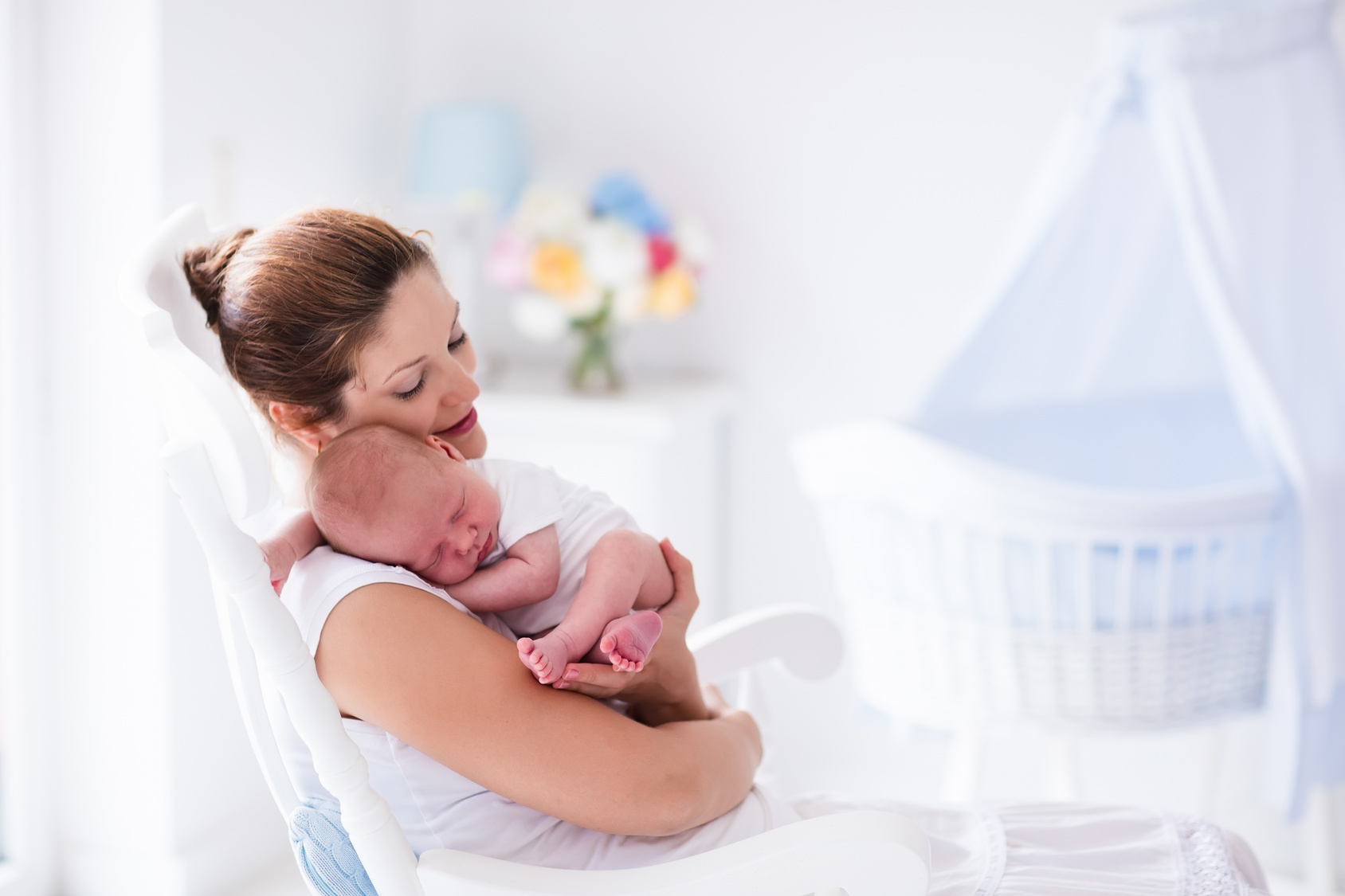Many studies have assessed the risk of depression in the mothers of infants, but fewer studies have focused on the risk of depression in the mothers of older children. A recent study published in BJOG suggests that mothers are not only at risk for depression during the first year after childbirth but are at high risk even at four years postpartum.
In this study, women were recruited during pregnancy from six public hospitals in Australia. Questionnaires were completed at recruitment and 3, 6, 12 and 18 months postpartum, and 4 years postpartum. A total of 1507 women participated in the study and were enrolled at a mean gestation of 15 weeks. The mean maternal age at birth was 30.9 years of age (range of 18-50). The Edinburgh Postnatal Depression Scale (EPDS), was used to identify identify women with depressive symptoms.
Few women reported depressive symptoms at all time-points. However, about a third of the women (31.4%) reported depressive symptoms at least once between early pregnancy and 4 years postpartum (scoring 13 on the EPDS). The prevalence of maternal depression was high at all time-points, around 10%. The prevalence of depressive symptoms at 4 years postpartum was 14.5%; this was higher than at any time-point in the first 18 months postpartum.
The authors also attempted to identify risk factors for maternal depression at four years postpartum. They noted that women with one child at 4 years postpartum were more likely to report depressive symptoms at this time compared with women with subsequent children (22.9% versus 11.3%), and this association remained significant after adjusting for potential confounders (adjusted odds ratio (AOR) 1.71). Other strong predictors of maternal depression included:
• Depressive symptoms during pregnancy or first postnatal year (AOR = 4.30)
• Exposure to multiple stressful live events in the previous 12 months (AOR = 2.53)
• Intimate partner violence (OR=3.47)
Other factors, including younger maternal age, low income, and living without a partner were initially identified but lost statistical significance when adjusting for potential confounders.
This is the first study to report the prevalence over time of maternal depressive symptoms from pregnancy to 4 years postpartum in a large, prospectively recruited cohort of first time mothers. This report is consistent with previous studies in identifying previous depressive symptoms and intimate partner violence as risk factors for maternal depression. What is new – and quite concerning – information is that women are more likely to be depressed at four years postpartum than during the first year after having a child. This finding is a bit different than a US-based study which found the prevalence of depressive symptoms to be highest in the month after birth (26%) and then remaining stable at around 15% in assessments up to 36 months postpartum. (The two studies may not actually be that different because the current study did not assess mood symptoms ruing the first month postpartum).
Multiple studies have concluded that the children of depressed mothers are at increased risk for behavioral problems and other mental health issues. Data from 7429 mother–child pairs participating in the Avon Longitudinal Study of Parents and Children in the UK indicate that maternal depression (assessed when the children were 1.5 year old) is associated with an increased risk of psychiatric diagnoses in the children at 7.5 years of age.
Not only were these children exposed to maternal psychopathology, they were more likely to be exposed to other risk factors for psychopathology (such as having a single caregiver, being of low socioeconomic status and being born to a young mother). The authors estimated that exposure to each additional risk factors increased the odds for having a psychiatric diagnosis by at least 20%. The authors conclude that preventive strategies need to be aimed not only at the treatment of maternal depression, but also at identifying associated risk factors.
In an accompanying editorial, Meltzer-Brody and Brandon urge a new approach to how we take care of the mental health needs of mothers:
One of the most important ways in which we can address the neglect of maternal mental health is by examining the delivery of our healthcare services to children and families and finding ways to incorporate psychosocial and mental health assessment and intervention across mother–child units. It is extremely naive to believe that mothers can provide optimal care for their children without having adequate support and treatment for the widely prevalent societal and mental health concerns that challenge women during their reproductive years. Second, if we are to mitigate the intergenerational consequences of violence against women, we must take an active stance against intimate partner violence. Across healthcare settings, we can only optimize mother and child outcomes through tireless advocacy, careful assessment and immediate intervention.
Ruta Nonacs, MD PhD
Barker ED and Copeland W. Relative impact of maternal depression and associated risk factors on offspring psychopathology. BJP. 2012;200:124-129.
Wang L, Wu T, Anderson JL, Florence JE. Prevalence and risk factors of maternal depression during the first three years of child rearing. J Women’s Health (Larchmt) 2011;20:711–18.
Woolhouse H, Gartland D, Mensah F, Brown S. Maternal depression from early pregnancy to 4 years postpartum in a prospective pregnancy cohort study: implications for primary health care. BJOG. 2014 May 21. d








Leave A Comment